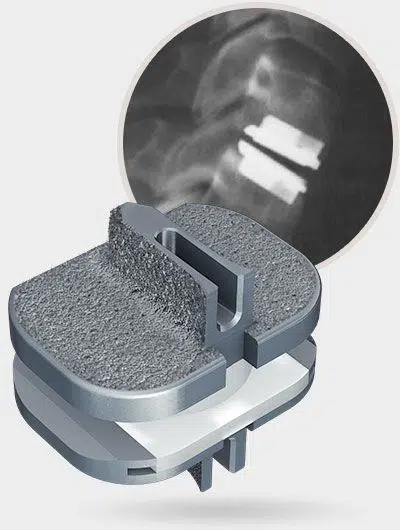prodisc C Total Disc Replacement –
An Alternative to Cervical Fusion
Neck and Cervical Spine Anatomy
The vertebral bodies encase the spinal cord to provide protection. When stacked on top of each other, they form the spinal column which provides stability for the head and upper body. The spinal cord and the nerve exits are located within the spinal canal.
The intervertebral discs are located between the vertebral bodies. These discs cushion shock forces, acting as “shock absorbers”. The discs in conjunction with the vertebral joints facilitate motion by turning, stretching and bending of the neck.
Degenerative changes of the spine
Degenerative changes of the spine occur from natural aging associated with pathological changes of the vertebral bodies, intervertebral discs, ligaments and vertebral joints.
These changes can greatly limit both the mobility and stability of the spine.
The stability of the spine can also be compromised by unnatural weight distribution caused by a hereditary abnormality, or a lack of movement associated with a sedentary lifestyle. Any previous operation or trauma to the spinal column can also cause a loss of stability.
Any form of instability can progress to become a pain generator.
Herniated Discs
The described degenerative changes or trauma can cause tears in the intervertebral disc. The escape of the nucleus (or soft interior) of the intervertebral disc outward through these tears may cause a disc herniation.
The disc herniation can impinge on the nerves and depending on the location can cause pain in the neck, arms and shoulders. In the extreme case, it can cause paralysis.



